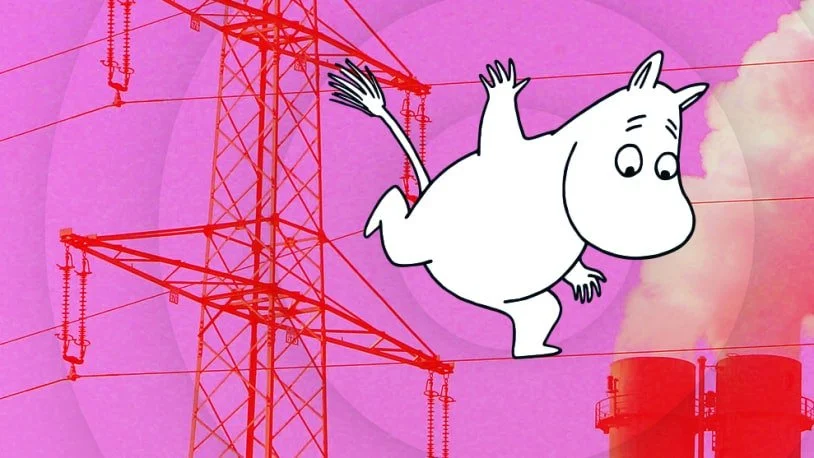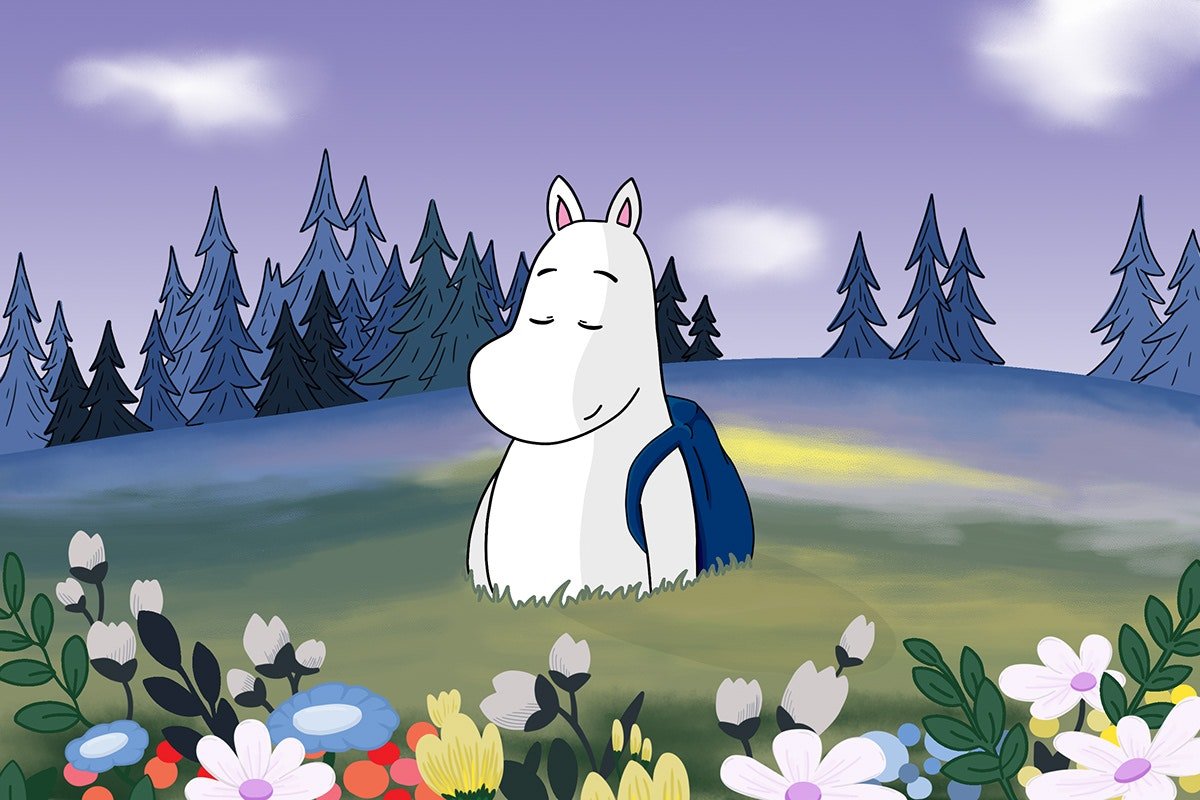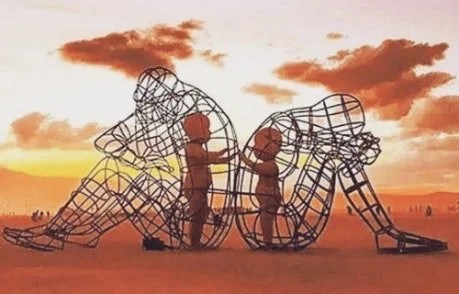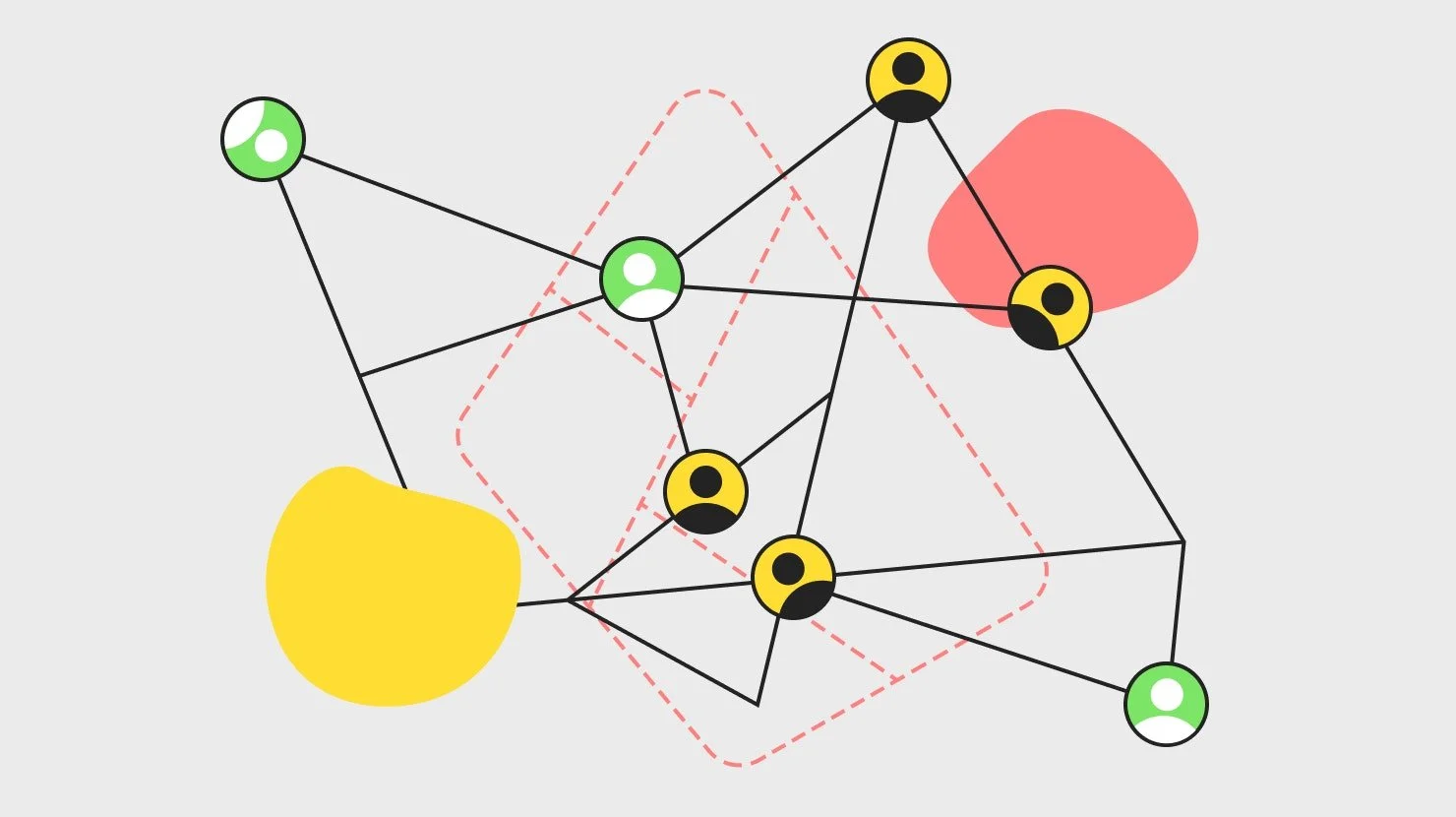Self-Defeat!
Illustration by Don Martin
Two of the biggest macro-stories last week were the ongoing Russian invasion of Ukraine and expanded lockdown across more than 30 cities in China due to Covid-19.
Two of the bigger micro-stories last week were the shutting down of CNN+ just 32 days after launch and the 40 percent plunge in Netflix stock.
Though each was different they shared a common trait which is a surprising reversal of fortune!
Defeat seemed to be snatched from the jaws of victory!
Illustration by Don Martin
Self-Defeat.
A case can be made that most successful individuals, institutions and nations are rarely defeated by others but find ways to defeat or weaken themselves to enable their own withering and dissolving.
In almost every case the same four indicators have been flashing for a while, but no one was paying attention.
The four symptoms of SDD (Self-Defeating Disease) are:
Incestuous thinking: A smaller and smaller group of decision makers with similar backgrounds and long tenure in the same place.
Cult replacing Culture: A cult either around a leader, a “way”, a fashionable financial market meme (“everything as a service”, “data driven everything”, “streaming is the only way”, or some other weird dogmas parroted and echoed by a fawning press chasing page views, trending stories and personalities).
Fear: Fear of speaking up, fear of change, fear of opposing the leader or “the way”!
Overreach: Letting recent success and fawning make one lose perspective that much success is driven by luck and trends that can turn and therefore overreaching too far or moving too soon.
Illustration by Don Martin
The symptoms at play.
Russia: The long table that Putin sits at the very end of reveals his self-isolation, fear and cult mongering which has led to one of the greatest (and tragically bloodiest) strategic miscalculations in decades. Regardless of whether Russia ‘wins” the citizens of a civilization that gave the world Tolstoy and Tchaikovsky has been led backward rather than forward. Truth has a habit of breaking in and facts are stubborn things. Sooner or later gravity has its way with initial upward floating balloons of baloney. And Russia and Russians will find in time their own leader defeated them and pushed them back a generation. If time is all we, have he robbed a nation’s proud citizens of years of their lives.
China: A little over one year ago China appeared to be unstoppable. Their economy was soaring. They had Covid under control. Their next generation technology companies from Alibaba to Tencent were growing and innovating.
Then overreach.
The leadership determined that it was time to not let any opposing forces rise thus they set about attacking their technology firms destroying nearly a trillion in value and stalling innovation. Soon this began to slow the economy and, in a world, where software, talent and change will determine the future they froze people with fear.
They thought that they could control Nature, but Covid morphed and their internal belief in second-rate home-grown vaccines now have country at great risk. Now the “way” of zero covid tolerance has tied their hands to playing a potentially losing game stirring resistance greater than ever before.
Finally, since overreach loves company, they decided to forge a great fusion with Mr. Putin badly hurting their reputation and “soft-power”.
China is a great country and the Chinese a great civilization that will recover but their recent setbacks are all self-inflicted due to a cult like leader, incestuous thinking, fear, and overreach.
Netflix: In hindsight it is so clear that Netflix no longer has a significant edge in technology or data or programming (the edge they still have for the moment is international sourcing of programming). They had started as David taking on Goliath but now are increasingly feared and are regarded as bullies. Their “keeper” philosophy of upgrading talent had dissolved from a great idea to pure drivel and so much of their data and talent propaganda is Kool-Aid that even their talent only tolerated due to a soaring stock price. Now the entire company is perceived differently internally and externally and in a world of omni-channel, omni-presence and omni-everything being streaming only is not that omni-potent. Their leadership is brilliant and have created an amazing company but somewhere they tripped into the light fantastic.
CNN+: Very few people watch CNN most days. In February average prime time audience among people 25 to 54 was less than 150,000 people! And CNN is not specifically paid for (it is bundled as part of a cable package) and covers actual news. CNN viewership rarely ever reaches a million and that is when there is massive breaking news. So now create a non-news streaming channel that costs $5.99 per month, and you must be high or believe a Mckinsey analysis that you paid for to anticipate 2 million sign ups the first year. (After a month of heavy promotion and cut- rate pricing of $2.99 a month for life just over 100,000 people signed up and daily viewership was about 10,000 people which is less than half the number of people who read this post today!).
CNN+ was not about the future of CNN. It was about hurt feelings, about the future of its personalities, about leaders making a mark and earning a stripe for launching things or being aligned with the coolness of streaming. Mostly it was a massive self-induced hypnotic trance among some of the smartest and most accomplished people in the business who spent too much time watching CNN.
Three hundred million dollars later the field of dream has led to a war of recrimination, a sullied brand, a set-back to a merger and tragically lots of junior people without jobs and world class talent with egg on their face.
Illustration by Don Martin
How to avoid self-defeat.
Russia will evolve. China will thrive. Netflix will try expanding to gaming and remain one among a handful of leaders and CNN will be one additional reason the new “HBODiscoveryMaximus” service will be worth paying for. None of these players are going away but they need not have suffered these completely avoidable setbacks.
These were not the setbacks that come with trends turning, the uncertainties of innovation or the win and lose of daily business or strategic competition.
These were the setbacks of self-defeat.
Since the best of talent and the best of companies can defeat themselves, we need to be wary when we spot the four symptoms of Incestuous thinking, cults, fear, and overreach.
And we must ensure that organizations and individuals can access remedies for curing SDD (Self-Defeating Disease):
Diversity: Diversity of backgrounds and thinking particularly in leadership teams are critical. If everybody thinks the same way, it can be dangerous. Disagreement and challenging points of view is what boards, external perspectives and independently successful people bring to a company or to a person.
Building a case for the opposite: Whenever a key decision needs to be made a team or individual should be charged with building a case for the exact opposite of what you as an individual, a leader or board are considering. This provides two benefits. First it allows one to make sure that group think does not disconnect us from reality since there is a reminder that we may be wrong. Second it helps us correct gaps in the thinking of our original recommendation. It is like stress testing our proposition.
A blank piece of paper approach: Many times, individuals and companies find themselves in self-defeating positions because of a way of doing, a historic momentum, legacy costs, or structures and fixating on current category dynamics. What if one was to launch a company or initiative with a blank sheet of paper with only three constraints. A legal one (whatever one does has to be legal), technological (it must be possible today) and economic (some breakeven or other financial constraint) what would one do to anticipate or meet a customer need?
The future comes from the slime and not the heavens: There are many benefits of being a leader, working at a very successful company and being on the top of the world. Everybody wants to meet with you or think you are cool because of the fame and reputation of your company. The press fawns and friends’ gush. It gives us all a great rush. Important that we do not get too high on our fumes and begin to believe our flatulence smells like Chanel 5. T
The future usually does not emerge from the gatherings at Davos, The Allen Conference or at TED but where no one is looking or visiting. The Auto companies were looking at each other and they missed Tesla and Uber. Procter and Gamble missed Dollar Shave Club. IBM missed Microsoft. And today Tik Tok has more engagement than every Facebook property combined (Facebook, Instagram, and WhatsApp). So, let’s meet the crazy folks who have an idea, go off the beaten path and not take ourselves too seriously.
Or let us remember just one characteristic to minimize self-defeat.
Humility.
Management Next!
Illustrations by Rob Hodgson.
It is a difficult time to be a manager whether one is managing a tiny team or a large global organization.
Several challenges from a) business model disruption caused by technological shifts which also makes managers question their own relevance b) distributed and unbundled work, c) the expectations and sensitivities of Diversity, Equity and Inclusion, d) the rapid pace of change, e) a multi-generational and multi-ethnic workforce and f) the need to balance multiple stakeholder objectives from markets to purpose and values are causing stress, burn-out and self-doubt among many.
Management and leadership remain important in organizations of most sizes and the utopian belief of holarcracy (self-management), or a hive mind form of distributed management has not yet taken the world by storm. Many of these theories collapse and crumble in the rough and tough world of people and market competition.
Managers and management are not going away.
Rather the best managers grow themselves and adapt to new challenges via a threefold path:
a) A focus on deliverables.
b) Optimizing via feedback.
c) Growing leadership and not just management skills.
Illustrations by Rob Hodgson.
A focus on deliverables.
Organizations exist to satisfy a customers stated or un-stated needs with some combination of product (hardware or software) and service.
Across all industries around the world, one sees the same eight customer/client needs.
Four of these expectations are focused on the what which is the quality of the product or service and four of them focus on the how which are about excellence of delivery.
The What/Outputs: 1) Quality product whether it be a piece of hardware, a tube of toothpaste or an advertising campaign is job one, 2) Insights about the customer or the client’s customer that makes them see things differently and identify new markets and opportunities, 3) Inspirational Design/ Ideas because differentiation usually happens here and 4) Value which is not just about price competitiveness, but the quality of output and outcome given the level of input.
The How/Process: 1) Collaboration with the customer’s other suppliers as every firm works in a world that is both connected and businesses need to match and mix the best of breed partners with minimum friction and drama, 2) Continuous improvement to keep up with new changes, trends and consumer needs, 3) Operating discipline in making deliveries on time and on budget, and 4) Values of the company including purpose, DEI and other quality of culture variables.
Amidst the tidal waves of changes and pressures confronting managers these customer/client needs are stars to steer and manage by.
Without customers and clients everything else is moot.
And since increasingly customers care about how talent is treated and the purpose of the company many of the key planks of purpose, values and DEI gain greater traction through this lens.
Illustrations by Rob Hodgson.
Optimizing via feedback.
To grow one needs to continuously improve.
A key ingredient to improvement is feedback.
Feedback however is both difficult to give and receive.
Feedback challenges are even more pronounced these days due to three factors:
a) Covid: an increasingly sensitive workforce emerging from a year of Covid-19 driven challenges with heightened emotions and changed mindsets.
b) DEI: a concern that criticism may be taken as a form of insensitivity or discrimination as companies rightly focus on ensuring Diversity, Inclusion and Equality.
c) Polarization: a polarized social and political environment.
The six steps to giving better feedback.
Best practices suggest that there are six approaches that can help people give and accept feedback in ways that recognize these and other realities.
1. Focus on how the task or the process could have been improved rather than criticize the person: By focusing on how an assignment could be done better the emphasis is in on the product and not the person.
2. Compare the shortfalls to a higher standard that might have been met on another project or another time: By recalling assignments or times where the individual or team did a great job, one re-enforces to the person or team that they are capable of having done better. The emphasis is on what was less than ideal on this occasion versus rather than believing the individual or team is incapable of doing a good job.
3. Make yourself sensitive and aware of extenuating circumstances: We all have bad days and many times these are a result of something else distracting us or worrying us in our lives. It may be illness, family issues or other challenges. By empathizing with an individual via wondering if there is a reason quality has slipped indicates both concern and humanity.
4. Provide input as specific as possible as to what could be done better: Pointing out what went wrong or was less than optimal is only one half of feedback. The more important half is showing or teaching or guiding on how one can improve. Identify either steps or training or changes that need to be made.
5. Identify the next opportunity or project for a do-over or try another take: By showing both how one can improve and then identifying an upcoming opportunity to put the feedback to work concentrates the mind and channels emotions to action and the possibility of correcting the shortfall.
6. Provide personal help and perspective: If feedback is provided in the context of what others have struggled with over the years or what you may have learned and improved it lets people know that mistakes, mess-ups, and other shortfalls are par for the course in career growth. By also asking how you can help re-enforces that you are on the persons side and are committed to try to make them improve.
In addition to giving feedback, it is important for managers to get feedback.
Three ways of ensuring one is getting feedback
1. Scan for signals: People are constantly providing feedback even if they are not vocalizing it. In some instances, you may gauge it in numerical signals from how well your writing is read, reacted to, or shared or whether you are invited to key meetings. Other times it is to watch facial and body language. You learn a lot by reading a room or a Zoom gallery.
2. Ask for feedback on a regular basis: One can do this with three simple questions which by the way they are framed ensure people are comfortable helping you since they are positive in tone:
a. What worked well?
b. If/when I do this next time what could be better?
c. Who do you think does what I need to do well and where can I learn more?
3. End of Day or Week Self Review: Most people know in their gut what worked or went well and what did not. Many successful individuals end the day or week with some variation of a quick review:
a. The Work: What went well with my work product that I feel proud signing it and what could have gone better?
b. The Team: What felt good and productive in the way I interacted with people and where could I have been better in some ways in handling my or someone else’s emotions?
c. The Improvement: What little improvement did I manage to make today or this week? A new habit. Learning a new approach. Strengthening a relationship.
Illustrations by Rob Hodgson.
Growing leadership and not just management skills.
A manager is not the same as a leader.
Every single person can be a leader.
Leader is not a title that is bestowed but a role that is lived.
Leader does not mean boss.
One can be a leader with zero minions or reporting staff.
People are assigned to bosses.
They follow leaders.
The six traits of leaders.
Everyone can learn and build the traits of a leader if they wish to and are disciplined about it.
Becoming a leader does not entail anyone else allowing it, awarding it or being able to take it away.
The six traits are 1) Competence, 2) Time Management, 3) Integrity, 4) Empathy, 5) Vulnerability and 6) Inspiration.
They are all internally driven and with discipline and time can be honed and sculpted.
1. Competence: If one’s skills are not current or up to date it is very hard to manage or lead other people. This is a key reason why every manager must set time aside to learn and keep current.
2. Time Management: Great managers do not waste their time or other people’s time by calling for useless check-ins and meetings. They also learn to balance the urgent and the important by allocating their own and other peoples time to projects that are key to operating today while also remaining competitive tomorrow.
3. Integrity: Trust is speed.
Trusted people rarely have the need to pull out multi-paged power point decks to convince their teammates, bosses, and clients about what they are recommending.
If one is not trusted, it is hard to be a leader.
Trust can be earned by placing a primacy on facts, being clear about one’s intentions and transparent about how one is making decisions.
4. Empathy: Leaders bring about change and achieve goals by bringing other people along with them.
To do so it is key to understand where people are coming from. What their fears, concerns, challenges as well as hopes, desires and dreams are.
5. Vulnerability: Vulnerability is strength and not a weakness.
By speaking about things, one worries about, one reveals humanity and comes off as believable.
It makes other people step up to try to help and offset your concerns or lack of competence with their or other people’s complimentary skills.
But as importantly it gives people the room to also speak up and point out other weaknesses that may exist not just with you but on projects that you are working on.
6. Inspiration: As Blaise Pascal wrote “We choose with our hearts, and we use numbers to justify what we did”.
After the facts and the data, after the PowerPoints and the spreadsheets we often remain unconvinced, dis-believing, and hesitant.
Yes, we are living in a data driven, silicon based, computing world but all of us are story driven, carbon based, feeling individuals!
Joan Didion wrote “we tell ourselves stories in order to live” and thus storytelling and examples bring a vivid reality to get people to rise to another level.
Learn to communicate through words, stories, art, and example.
Career Tools.
Here are four tools that may help on a career journey.
They are a map, a telescope, a compass and a first aid kit.
A map.
A working life will last four or five decades and will span three broad phases. An early, middle, and late stage.
It is important to know where you are and what are the guideposts that matter at each stage.
Early in the journey.
A life of work is a decades long adventure.
A marathon not a sprint.
During the early years it is important to align with the long-term trends that can serve as a tail wind. Every era has its growth industry and secular forces. Being in the right industries or the right areas in an industry can help you be successful. Conversely, regardless of how good you are and how hard you work, it will be hard to sell typewriters in an age of word processors.
Another key in the early years is not to be discouraged when the landscape or weather turns difficult. Even the best jobs in the early years suck for a third of the time. One should not turn back, stop moving forward or give up. Time dissolves more problems than man or woman solves.
Finally, keep your eyes on the horizon and not fixated on other travelers. You are trying to improve and get better towards a goal versus trying to stop others or getting to the goal faster than others. Improving versus your past self is the only true measure. Competing with others is not beneficial and you may need their help when you hit setbacks and you need others to carry you forward.
Middle of the journey.
It is at this stage where extra-ordinary career trajectories are enabled by finding the right sherpas and focusing on the movement and paths that serve you well.
Find a great boss or mentor and start to focus on what you excel at and gives you joy.
A large part of anybody’s success is driven by who they report to. The right manager and leader not only mentors and teaches but also delegates and promotes. Often these skills not only allow you to thrive, but it enables your manager to progress in the organization paving a path for your own forward momentum.
A decade or two into a career most people begin to understand what they are good at and what gives them joy. It is imperative that one now focusses on these key strengths and not allow your company to try to make you a “well-rounded player” or spend time addressing your weaknesses. Yes, it is important to understand how different components of an organization work and to be collaborative but companies and markets reward expertise, competency, and skills and not some mish mash goo of generalities.
Late in the journey.
Three decades or more into a career one still has a decade or two ahead and there are two keys to ensure that these decades are productive, impactful, and meaning filled.
First, you must check to see if the map you are using remains valid. Just as anyone looking at a map of a world from decades ago would not recognize the names of countries or boundaries today, the same holds true for expertise. It is time to unlearn parts of what you know, transform your way of operating, and potentially re-invent yourself to align with a different terrain.
Second, this is where you need to determine if it makes sense to take a different road or trajectory as you continue your journey. Exits are as important as entrances. Every career in a company has a midnight hour, and the smart ones leave at five to twelve. This is not just elegant but can extend and amplify one’s career and impact.
To read more about the different career phases please read 12 Career Lessons.
A telescope.
As one progresses in a career it is important to look ahead and try to prepare for what may come.
The future of work is unlikely to be what it is today, and it is key that one adapt and align and skill up for what lies ahead.
Due to globalization, demographic shifts and technology change, the world of work will look very different a decade from now in at least four significant ways.
a) Gigs: Larger portions of the work force will be gig workers/free agents even if we work for long periods of time in the same company. Work has become unbundled into component parts and distributed across geographies and time zones. Cloud based and other technologies allow companies to combine and re-aggregate talent and expertise while the same technologies enable people all over the world to access opportunities they did not have. This has been true for many well-paid professions from consulting to the entertainment industry and is not just about Uber drivers and Task Rabbits.
b) Technology enabled and measured: Everything that can be digitized or technologically enabled will be. Most jobs will require us to work in tandem with machines and technology. Increasingly, work will be quantified and measured as it already has in many industries like sales where we measure the number of leads a tele-marketer close per hour or when we calibrate the cost per mile and accident-free driving skills of truckers.
c) Third Connected Age: Just as search, e-commerce, mobile and social changed business we are going to see AI, 5G, AR/VR and Blockchain sculpt new contours into what work is, how it is done, how value and ownership rights are determined and much more. The price of crypto or NFT’s or brands in the “metaverse” are the cosmetic layer of real dramatic change taking place underneath.
d) Older and more diverse workforces: Except for Africa and to a certain extent India the world is aging fast, and people are living longer while population is declining. For a variety of reasons from economic need to delayed pensions to decades of healthy life after sixty, to the desperate need for employees. the workforce is going to grow older and as a result truly multi-generational with employees spanning nearly six decades! This will be in addition to continued diversity in ethnicity and gender.
This view of the future will require us to a) create true competencies and expertise, b) build reputations and networks, c) learn to work with technology while building skills that computers cannot easily replicate and d) be ready to work with a far more diverse work force than ever before
For more clarity on the future of work please read How to Thrive in the Modern Workplace. The Fractionalized Employee. and The Age of the Seasoned.
A Compass.
In a world buffeted by change where a working life lasts decades what star does one steer by?
Find alignment with what you excel at and what makes you grow.
To frame yourself so people understand what you are at good at and at the same time continue to hone and grow your skills it is important to understand your niche, your voice, and your story.
Niche allows you to build expertise and position yourself.
Voice reflects the reality that people do not follow titles, but they follow people and want to know who you are and what you believe in.
Story gives people reason to believe and clarity on how you became who you are. We are all stories, and we need to make sure we know and can narrate ours.
To help you reveal your niche, voice and story come up with three words for each. Three words that describe what you do best at or are expert in, three words that describe who you are and three words that describe the story of your career.
These nine words can help you not only frame yourself but also filter opportunities and has been used with great success by thousands of talented people.
To understand and see the exercise please read Career Turbocharging.
While the Nine Word Exercise serves as a compass that allows you to find and point to your true north, what about a compass that can help you decide which path to take when you come to a fork in your career? When you come to ask yourself or are forced to ask, “should I stay, or should I go?”
We often make the mistake of deciding to stay or go by using the criteria of money, fame, and power as the key decision variables. Leaving one job for another for more money, fame, and power while understandable is not the main framing criteria especially once you are mid-career and relatively successful. The questions to ask are more about freedom, story and growth.
Will you have the freedom and flexibility you need that gives you satisfaction ? Do you have to suppress your story and make it a supporting actor to the story of the company or does your career and company re-enforce the story of your life ? And growth. Can you keep learning and growing as a person and professional?
How best to decide to stay or go? Please read Should I stay, or should I go?
A First-Aid Kit.
Work is important to us all. In addition to making a living, work gives many of us identity, purpose, meaning, and connections.
But work is often filled with stress, pressure, shocks, and challenges. Industries swirl, bosses change, clients pressurize, markets go haywire. Key pitches are lost, opportunities disappear, and mistakes are made. And rest of life does not stop either. Family issues arise, health fluctuates, wars and pandemics break out.
As a result, all of us at some stage or the other find ourselves stressed, angry, depressed, disappointed, lost or more.
All over the world smart companies and leaders recognize that they need to help people take care of their physical, mental and emotional operating systems.
We cannot be productive if we are spent, swirling, emotionally raw and running on fumes.
It is imperative that we find ways to feel better, to repair and to be better.
Sometimes the best thing one can do for one’s career is to focus on oneself and not on the company or the career . A physically diminished and emotionally impoverished you does not serve anyone well.
Feeling and being better is often a combination of small steps that enable compound improvement and focus on filling in gaps. It involves looking at things with new mindsets that embrace openness and improvisation. Finally, one recognizes and aligns with the reality that life combines loss, love, and learning.
Opportunities to repair and heal can be found everywhere and every day and often does not require major cost or time investments and could be found in gardens, bodies of water or in a book of poems.
A distilled compilation of how to look after yourself and others can be found in Repair and Six Ways to Feel and Be Better.
May you thrive!
Here is a list of all the pieces noted in this post for easy navigation.
Connectedness.
Nike’s slogan is “Just Do It!”
In the world we live in we may want to “Just Connect!”
Connectedness or the lack of it is a driving force far more powerful than we might imagine.
There are many types of connectedness.
Connections and Technology: The Third Connected Age.
In 1993 with the advent of the World Wide Web we entered The First Connected Age where we connected to discover and connected to transact. This is today known as Search and E-Commerce which are forces that have given rise to companies like Amazona and Google.
In 2007 we entered The Second Connected Age (which builds on and does not replace The First Connected Age) when we were connected all the time and connected to everybody due to smart phones and social networks. These two advances which we call Social, and Mobile have re-ordered society, politics and culture while creating juggernauts like Apple and Facebook but also enabling everything from Uber to Airbnb to Dollar Shave Club.
The world we live in today is hard to describe to someone thirty years ago.
But we have not seen anything yet
Four new forms of connection will re-order society, work, and the future much more in the next decade than the past three decades.
These are the four new connections that will drive The Third Connected Age.
Data connected to data which is machine learning the form of AI that is most scaled.
Much faster and resilient forms of connection called 5G.
New ways of connecting including Voice, Augmented Reality and Virtual Reality.
New Trust Connection built on the Blockchain.
The entire world of Web 3, Metaverse, Tokens, Wallets and DAO’s (all of which are different from each other but connected to each other) are just one subset of all the changes underway in The Third Connected Age.
It is key that every individual and company pay close attention to the implications and opportunities that The Third Connected Age will bring.
Connections and Humans: God Like Power
Today the capabilities that someone has with a modern smartphone would be seen as “God-Like” Power by people just two generations ago.
We can connect to anyone at any time around the world for zero to no cost.
We can connect to movies and shows across the world and across time.
We can produce, distribute, and monetize our work to a connected audience of billions.
The companies that have become most valuable are those that have leveraged the connected age to give the individual God-Like power.
Human beings are social and want to connect.
We want to be acknowledged and heard.
We want people to know we are here and find ways to make a mark on the passing of time so that people knew we were here.
Connections and the World: Globalization
While Ukraine and Covid-19 among other shocks have tested and questioned the premise of globalization, the shocks underline that we live in a connected world.
Some of the greatest challenges facing us are global in nature from Covid-19 to Climate Change to emerging AI and Biotech regulations and our struggles to deal with these are less about the reality that globalization is out of vogue but that our established governance models and institutions were designed for yesterday versus tomorrow.
Many of our structures were created post World War 2 when there was no Internet, no understanding of the Human Genome or China and India among the top 10 economies of the world.
Today in Board Rooms leaders are working to add resilience as a key to their supply chains and partner relationships versus a previous focus primarily on cost savings. In many cases this is not about being less connected but re-routing connections and adding additional layers of connections to provide optionality and manage risk.
The end of a connected world makes for good headlines, but the genie cannot be put back in the bottle.
Globalization will remain but will move to a multi-polar form of globalization with different countries and regions connecting in different ways to other countries. There will be tighter and weaker forms of connections which while not the most optimal from a financial perspective will be more resilient in the long run and reflect different cultures, beliefs, goals, and agendas.
Connecting the Dots: Creativity/Innovation.
At its heart innovation is about fresh insightful connections and creativity is about connecting dots in new ways to move minds and hearts.
Both require people to inter-connect with each other and be connected to different stimuli and opportunities.
A closed gene pool leads to damaged children which is why cousins are not encouraged to marry.
The power and impact of major cities are that tides of different diaspora and talent inter-woven together. London, Paris, New York, Mumbai, Shanghai are key interconnection points.
The brain works when synapses connect.
Connecting Workspaces: Organizational design.
One of the biggest opportunities for companies is to find ways to work better internally and with external partners.
Better communication, reduced friction, sharing of opportunities and the ability to connect expertise to where the expertise is required can unleash significant growth and margin.
It is one of the reasons every company holds off-sites to enhance teamwork, leverages technology and encourages connection.
And connection between leaders and their teams, a company to a higher purpose and connected values are so central to an organization’s culture.
Companies continuously adapt and swing from centralization to decentralization, top down to bottom-up approaches to find ways that keep people connected enough to the marketplace and each other so as not to fly blind but not so connected that one is overwhelmed with so much information and options that decisions cannot be made quickly.
The rewiring of organizations is really about the architecture of organizational connections.
The Connected = a competitive advantage.
Andy Grove wrote only the paranoid will survive.
Paranoia is anti-connection and in a changing world it leaves individuals and companies deaf, dumb, and blind like The Who’s Tommy. We are unable to compete. (Unless we are playing pinball).
Individuals and companies that connect with a larger eco-system, are open to partners, have API’s (application protocol interfaces) and enabling technologies and platforms to connect with others and a culture where people communicate and disagree honestly will likely emerge with significant long term competitive advantage.
We should seek connectedness.
Because the connected will thrive!
Return to Office
Photography by Scott Firestone.
As companies and individuals navigate a return to the office here are some considerations one should keep in mind.
Photography by Scott Firestone.
The Future of Work will be increasingly distributed and unbundled.
There is no going back to December 2019 only a move ahead into 2022 and beyond.
The Covid-19 lock-downs underlined that the way many of us were working two years ago was not significantly different than the way we operated in 1980, despite a plethora of changes from advanced computing to new communication technologies to a huge increase of women in the workplace.
After two years of working differently with little if any decline in productivity the scales have fallen off our eyes and every individual is re-thinking work in several ways.
The role of work in our lives: The past two years have underlined the fragility of life and given people the opportunity to interrogate the meaning of work in their lives and the nature of how they do it. Inertia had led us to continue to do things that made very little sense but the shock of displacement from Covid has made many re-consider and re-think.
Where we work: Significant portions of a company’s employee base live in a location different than they did two years ago. Many have found their new habitat more conducive to their lifestyles whether it is for economic or family or other reasons.
When we work: The 9AM to 5PM or the 8AM to 8PM need for presence under the watchful eye of management has been replaced by many different ways of getting work done where a person has integrated work and non-work agendas in a way that suits them.
Who we work for: Up to a quarter of “full-time” employees have in the past two years developed a side gig for reasons of interest, passion, and economic need. They have unbundled their income stream from a single employer.
Web 3.0 and new technologies: A plethora of new technologies are increasingly going to enable a much more decentralized, open and composable future. Already companies like Meta are asking their employees to “live in the future” expecting half of the work force to be distributed across the world.
Our thoughts about work today are like Champagne corks. They have swelled with the new possibilities and will no longer fit into 2019 vintage.
Photography by Scott Firestone.
There are many benefits to in-person interaction but most of them do not require sitting in an office all day or for five days a week.
The three key benefits that in-person interaction bring are learning, relationship building and problem solving/creative idea generation.
Learning: There is a belief that some flavors of learning uniquely come from watching others in action or being mentored by bosses in an apprentice/guild like model. This is probably true for many industries and particularly for people early in their career or new to a company.
Relationship/Network Building: While relationships can be built online (for example dating apps), the reality is that some in-person meetings can help deepen and strengthen relationships. The best relationships combine the physical and the virtual, so some in-person interaction makes sense for many.
Problem Solving/Creative Idea Generation: If innovation is about fresh insightful connections, then the give and take between people can be a real asset. Whether it be the unexpected interaction between two colleagues or the in person back and forth of a brainstorming, these are benefits that result from being together.
But we should recognize that for creative brainstorming many people would leave the office to go off-site, building relationships and networks often took place at restaurants, bars, coffee shops and events and learning occurred at conferences and specialized training programs.
The key is that many of these occur out of the office, take up less than a third to half of a working week and need to be scheduled and programmed versus just happening by chance.
Photography by Scott Firestone.
Unbundled and Distributed work enable significant competitive advantage to companies that embrace them.
Imagine if you were a company starting today and were asked to choose between Door A and Door B.
Door A: You are limited to accessing talent who can afford to live near your headquarters or must work full time. This talent only works for you and is reliant on their entire income on you which could make them loyal but also potentially less likely to challenge the status quo since they may have limited optionality.
This door gives you great control over your people and a return to a simpler way to manage and organize.
Door B: You can access talent from anywhere in the world and they can work for you half, three quarters or full time giving them and you the ability for variability in employee cost and gives them the flexibility to fit their work into their life versus fitting their life into work.
This door gives you the ability to hire diverse talent, attract people from everywhere in the world while giving you flexibility on cost management but increases complexity and requires enhanced management styles.
For businesses needing to attract white-collar and knowledge workers asking people to return to the office for three or four or five days a week (versus coming together for specific training, creative or relationship building events) is in effect choosing Door A and will likely leave these firms at significant competitive disadvantage to companies who choose Door B and find a way through its initial messiness and complexity.
Photography by Scott Firestone.
In-Person interaction should be the focus versus returning to the office.
Six simple steps for every company to consider:
Future forward: Recognize that the future does not fit in the containers of the past and a four- or five-day week in the office is a container of the past. Communicate that your plans are about moving ahead to build on what has been learned in the past two years and not to return to some nostalgic halcyon days of yore.
Celebrate benefits of the past two years: Call out the significant benefits from flexibility and diversity to more that the world of unbundled and distributed work has enabled.
Re-enforce the importance of in-person: Explain why in-person interaction (supplementing just virtual connections) are important to your ability to compete, build talent, enhance relationships, and culture and generate creative solutions and solve problems.
Focus on the synergy: Emphasize that the company is trying to integrate the power of in-person with the flexibility of virtual work to build a solution better than either one separately and it will a) require some flexibility per individual and b) some iteration and constant learning.
Schedule events versus just days in the office: Program events from training to brainstorming to team get togethers both in the office and outside the office. Do not ask people to return to the office but re-turn to specific programs. An individual is not being asked to come back to the office which many do not find productive for “heads down” work of reading, creating documents or presentations but for “heads together” or some “heads up” work of training, relationship building and problem solving. If you have folks returning two days a week, make sure there is something programmed around these events those two days versus just having people sit around.
Freedom within a framework: Allow for some freedom within the framework in how many days someone returns to working together. Some folks may want to be together more than the prescribed two days or require more time together if they are going through orientation and training while others may need the flexibility initially of one or two days a month.
These steps communicate that you are looking forward, trying to balance the best of both worlds, and reflecting that talent looks for freedom, to fit their work into their life story and want growth (skills, personal development, career opportunities, income).
This approach is likely to attract and retain talent while ensuring a company’s culture and competitiveness.
It will not however work for everyone and a company at some stage may have to part with talented individuals who refuse to be flexible in their ways rejecting all in person work or working to undermine the new model. While losing talent especially stars is not ideal, a company is more than any one or two or three individuals and a certain framework is essential for fairness and cultural cohesiveness.
The real challenge will be on leaders and managers who will now need to truly up their skills in enabling, inspiring and motivating talent.





























